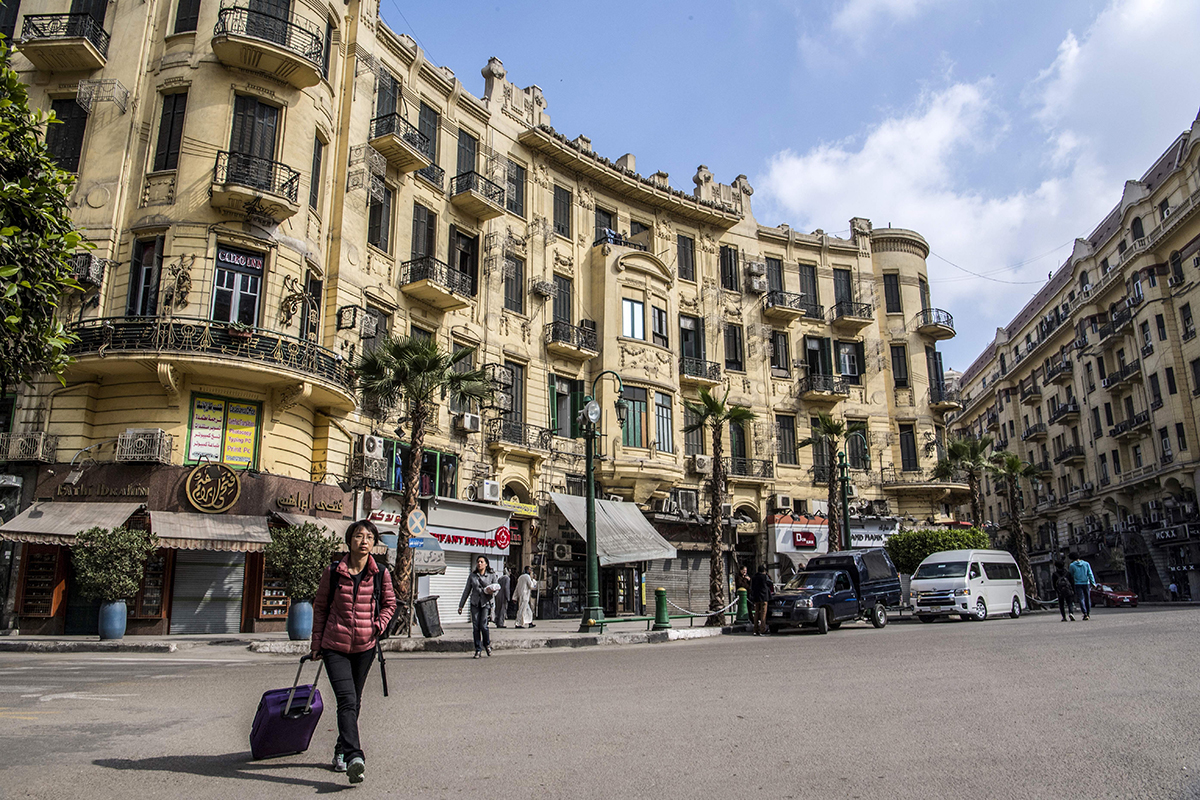1. The Tempo of Chaos
Cairo moves in time signatures that defy logic. Traffic jams aren’t obstacles; they’re conversations. Lanes dissolve into suggestion, and horns serve as punctuation marks in an endless urban dialogue.
Ask any local and they’ll tell you — the chaos is choreography. Drivers glide within centimeters of each other without collision, street vendors appear and vanish with perfect timing, pedestrians move with instinct rather than order.
If you come from a city of silence and schedules, this can feel like an assault. But spend a few days here, and something inside you shifts. You stop resisting the unpredictability. You learn to cross the street like Cairenes do — slowly, confidently, never stopping halfway.
“Cairo rewards surrender,” says Mariam El Gohary, a young architect who guides walking tours through Islamic Cairo. “You can’t control her. You can only dance with her.”
That’s the secret: Cairo is less a city to be managed than a rhythm to be absorbed.
2. Between Time and Timeless
Morning in Cairo starts early, often with the first call to prayer rising from thousands of minarets before dawn.
In neighborhoods like Zamalek, you’ll find joggers circling the quiet island roads, and café staff rolling down shutters as the sun spills across the Nile.
By 9 a.m., the city is fully awake — vendors shouting “foul, taameya, ya gameel!”; school buses honking in rhythm; the smell of cardamom coffee drifting from Beanos, Greco, or the old Groppi café.
If you’re new to Cairo, start your mornings here. Sit by the window, order coffee the Egyptian way — strong, dark, and unfiltered — and just watch. Don’t open your laptop. Don’t scroll. Just listen.
Cairo is a masterclass in attention. Every street corner holds a detail that would go unnoticed elsewhere: a shopkeeper watering the pavement to keep dust down, a boy carrying twenty loaves of bread on his head, a cat sleeping on a car hood as traffic passes inches away.
The past isn’t behind you here. It coexists.
In Downtown Cairo, you can trace a century in one block: Belle Époque facades beside art deco balconies beside concrete modernism. In Old Cairo, a Coptic church, a synagogue, and a mosque share the same sky. Time doesn’t replace itself here; it accumulates.
“In Cairo,” says historian Tamer Gadallah, “you don’t visit history. You walk through it on your way to buy bread.”
3. The People Who Hold the City Together
To experience Cairo, you must meet her people — not just guides or hosts, but the invisible citizens who keep the city humming.
Start with the taxi driver. He’ll ask where you’re from before you’ve even buckled your seatbelt. He’ll tell you about his cousin in Dubai, his favorite football team, and how bread prices used to be lower when Mubarak was still around. If you ask him for restaurant recommendations, he’ll pull over to call a friend.
Then there’s the bawab — the building doorman. His post is both watchtower and gossip column. He knows who moved in, who moved out, whose dog barked all night. Say good morning, learn his name, and your Cairo life will become infinitely smoother.
Street vendors are Cairo’s philosophers. A man selling mangoes might quote you a proverb about patience; a woman frying falafel will insist you taste one first “so you believe.”
You’ll meet tea sellers, newspaper boys, microbus drivers, each one ready to share a story — or at least a smile — that will remind you that Cairo is a city built more on people than policy.
“Every person you meet here adds a thread,” says Sarah Abdel Monem, cofounder of Cairo Dinners, a cultural supper club for expats and locals. “You come as a tourist, but if you stay long enough, you become part of the fabric.”
4. Where to Begin
Forget the checklist. Cairo doesn’t reward completion. The Pyramids will wait for you; so will the Egyptian Museum. But to really know the city, start smaller.
Begin in Downtown — the heart that still beats beneath the noise. Walk along Talaat Harb Street, past the scent of popcorn from Cinema Radio, and the old bookstores that still sell French novels from the 1960s. Step into Groppi, one of the oldest patisseries in Egypt, order a lemon tart, and sit under its stained-glass dome.
Then cross to Abdeen Palace, where soldiers guard gates older than the republic itself. From there, weave into Khedivial Cairo, a district of narrow passageways that come alive at dusk. Painters lean out of balconies; oud music seeps from cafés; and in places like Kodak Passageway, exhibitions, pop-up cafés, and galleries fill once-forgotten arcades.
If you crave quiet, escape to Zamalek — Cairo’s green island on the Nile. It’s the city’s exhale: leafy streets, embassies, art galleries, and old villas converted into cafés.
Try Left Bank or The Lemon Tree for breakfast by the river, or the Cairo Jazz Club for a night when the city hums at a different frequency.
And when the noise becomes too much, go east to Mokattam Hill, where the city spreads below like a living map. Bring tea, a notebook, and patience. Watch the sunset melt into the haze. You’ll understand then what Cairo does best — it holds your chaos until you find rhythm in it.
5. The Soundtrack of a City
Cairo has no silence, but it has music everywhere. The calls to prayer — five times daily — divide the day like commas. Between them, life happens.
In El Hussein at night, drums echo through the narrow lanes, Sufi chants mixing with the laughter of families eating grilled corn. In Maadi, soft jazz floats from cafés. In Downtown, the roar of traffic becomes its own percussion.
Even the city’s arguments sound melodic — a mix of exasperation and affection. A shopkeeper scolds a customer, then offers him tea. A microbus driver yells at another, then waves him ahead. Cairo’s language is loud but kind.
As writer Alaa Khaled once said, “Cairo isn’t beautiful. It’s generous.”
6. What to Feel, Not What to See
If you arrive expecting postcard perfection, Cairo will disappoint you. The air is thick, the traffic relentless, the systems inconsistent. But if you arrive curious, Cairo will open herself completely.
You’ll see contrasts that make no sense and yet feel entirely natural: a Ferrari idling beside a donkey cart, a rooftop garden above a crumbling building, a fashion boutique beside a decades-old koshari shop.
This is a city that teaches humility. It refuses to edit itself for you. And in that honesty lies its power.
“Cairo doesn’t perform,” says photographer Ahmed Hayman, who documents everyday life in the city. “She’s too busy being alive.”
For travelers used to polished tourism, that rawness can be startling. But it’s also liberating. You don’t have to look for authenticity here — it finds you.
7. The Long Goodbye
Cairo rarely lets people leave unchanged. Some fall in love, others in frustration, but everyone leaves with a piece of her dust in their lungs and something unnameable in their hearts.
On your last night, take a felucca — a small sailboat — onto the Nile. Let the city blur into lights and sound. The call to prayer will echo across both banks, mingling with laughter from the Corniche and the ripple of the water.
That’s Cairo at her most honest — chaotic, luminous, eternal. A city between calls to prayer, always moving, always remembering.




